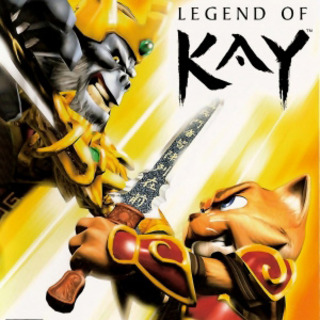A fun adventure that somehow seems hidden in the PS2 library.
The plot, although not epic by any means, serves it's purpose to drive the action. Unfortunately the story is delivered both poorly and inconsistently. The voice acting is horrible. It reaches levels so irritating that you're hard pressed to find an equal in other games. The character voices and accents are weak, stereotypical, and even insulting at times. So bad is the voice acting, that I skipped many cut scenes and sacrificed potentially important information, just so I didn't have to listen to it. It's also weird that they bridge the chapters in the story using still images displayed in a comic book style fashion. The cut scenes mid-chapter aren't displayed like this, so it disrupts the cohesion and makes me think the various departments working on the game weren't talking to each other.
Luckily, that sums up the biggest opportunity in the game. Most other areas are well managed and very enjoyable. As far as game-play goes, the Legend of Kay seems to borrow a lot from other titles, but does so effectively and makes each borrowed element it's own, versus a straight rip-off.
To break it down in simplest terms, you'll spend your time either fighting or platforming (or a mix of both at the same time). The combat is satisfying. Enemies usually consist of either apes or rats . Some may have melee weapons, some throw bombs, some wear armor. There's also some flying insects and animals that will attack you but they all seem to behave the same regardless of their species. Spiders and giant crabs make an appearance as well. Where things get fun is how they mix up the types of enemies in a battle, and how the waves they approach you in get bigger and more challenging. That's when you're really able to take full advantage of the weapon system.
By the end of the game you'll have 3 weapons: a sword which serves as a decent all-around weapon, a set of claws to quickly dispatch enemies without armor, and a giant battle hammer to take out those with armor. Each weapon is upgradeable and the combos you can perform on each will vary in strength and time it takes to execute them. You can switch weapons on the fly (as long as you're not in mid attack) to ensure you always have the best weapon at hand. You can also perform an area magic attack to damage a group of enemies that are in close proximity.
There's also a hefty selection of items that you can use in a fight. These include a jar of hornets that when unleashed will attack your enemies, a potion to refill your health, another potion to refill your magic meter, yet another one to increase how much damage you dish out for a limited time, and more. Because you can only carry a limited number of items it adds some strategy as to how are you going to approach your fights. This is especially true since you may want to make room for the other items that will help you on your quest, such as potions to reveal secret doors and bombs to open up new areas.
The regions your journey takes you on vary from forests to swamps, and even inside city walls. Some areas are larger than others allowing you to do a fair bit of exploring as you try to uncover every nook and cranny. This is where the platforming aspects come in.
While managing moving platforms there's a standard set obstacles and hazards to avoid, but the level design is well done. There's also basic switch puzzles to solve and something I like to call combo-platforming. This would be where you have to hit an idol of sorts, then press the button that lets you move to the next target to strike it (even in mid air). The idols can be a mix of safe and dangerous (so you have to plot your path correctly) and there's even ones where you have to switch weapons mid air to hit the next idol with the correct weapon. These idols will let you traverse gaps, open treasure chests, and more.
Fetch quests a plenty will keep your skills sharp, as there's a lot of having to find a switch or item and then return to the person who gave you the task to advise them it's complete. As far as game-play goes, the occasional back-tracking was the most off-putting for me. Once you get to know your maps it's not very hard to do, but I think if the level design was a little more clever some of the repeat travel paths could have been avoided (as I've seen done in other games).
The boss fights will often mix platforming and combat. Having that extra element of the platforming is welcome, as even though the boss styles are different (ranging from wild boars, to giant turtles, to see monsters) the actual act of killing them is the same. Dodge something, wait for their weak spot to be exposed, hit it, repeat.
Despite a few characteristics that look repetitious on paper, and the obvious elements borrowed from other titles, the development team was still able to put together a fun game that manages to stand out on it's own. There's a little bit of everything one would expect to find in an entertaining adventure without making things too complex.

